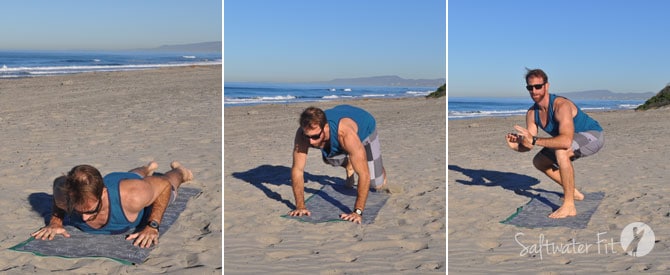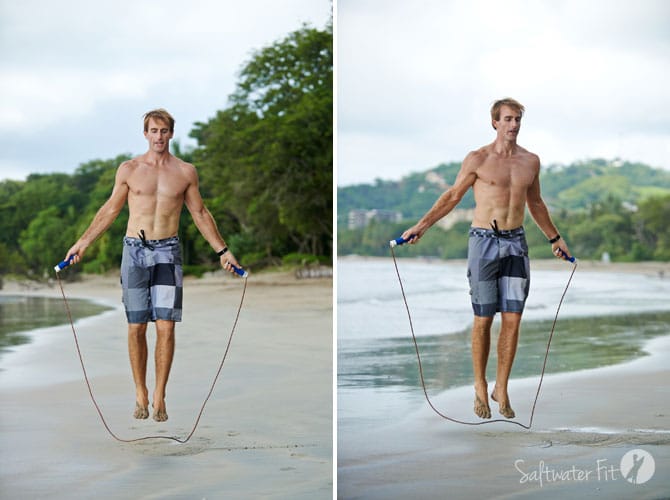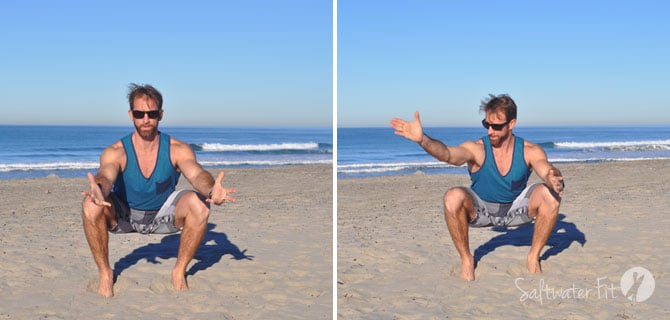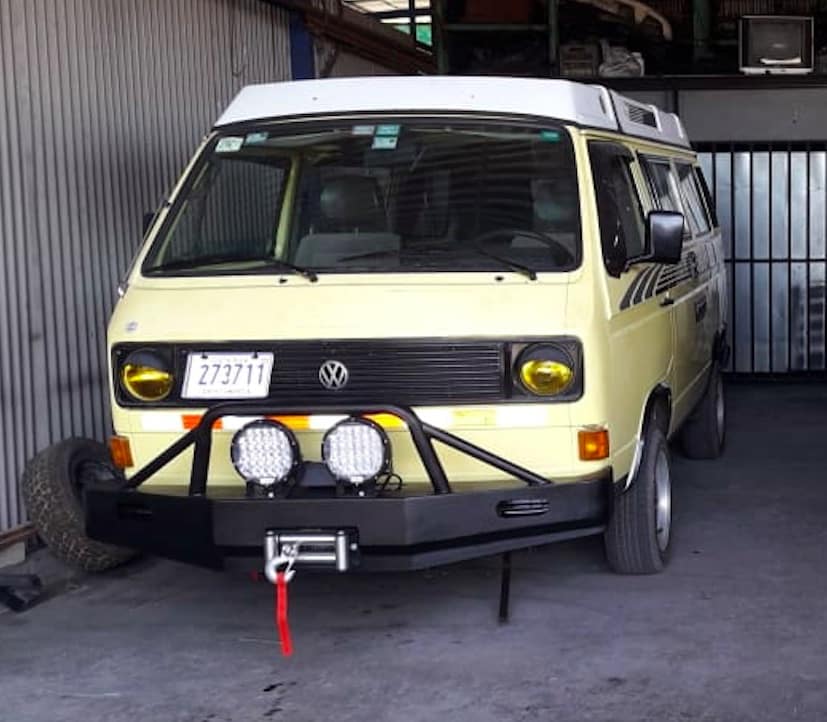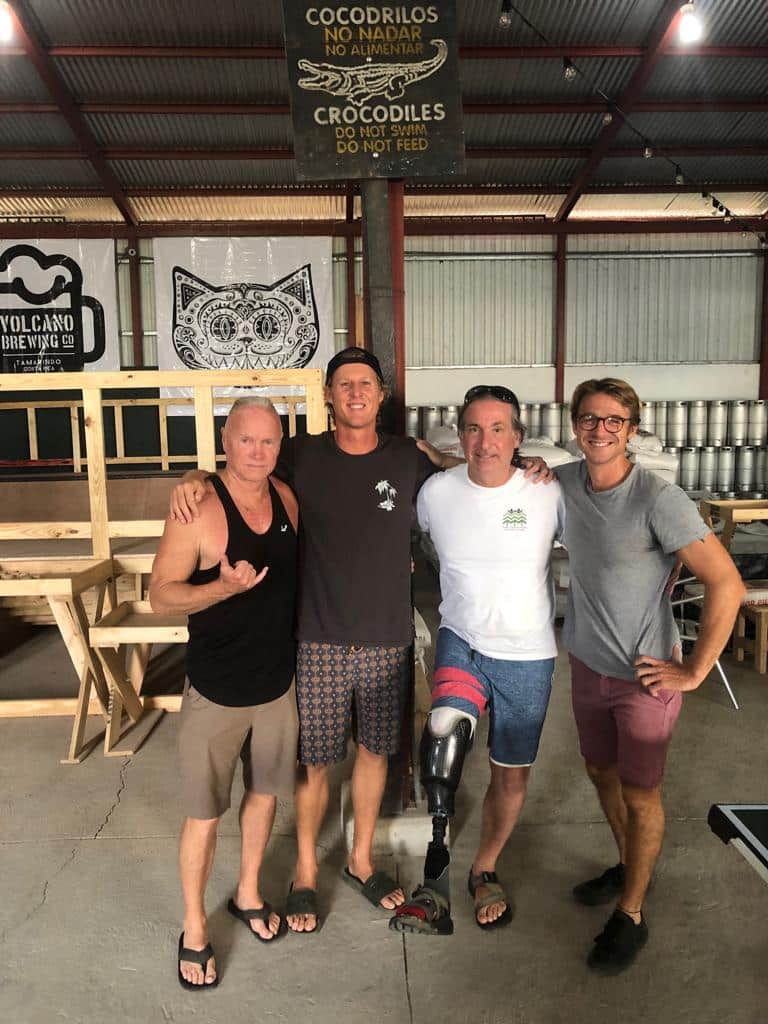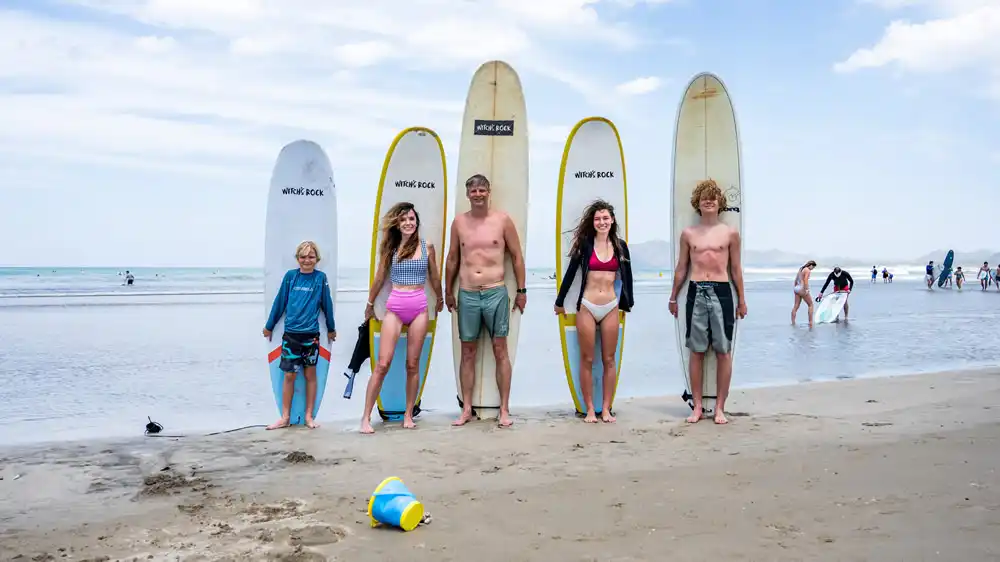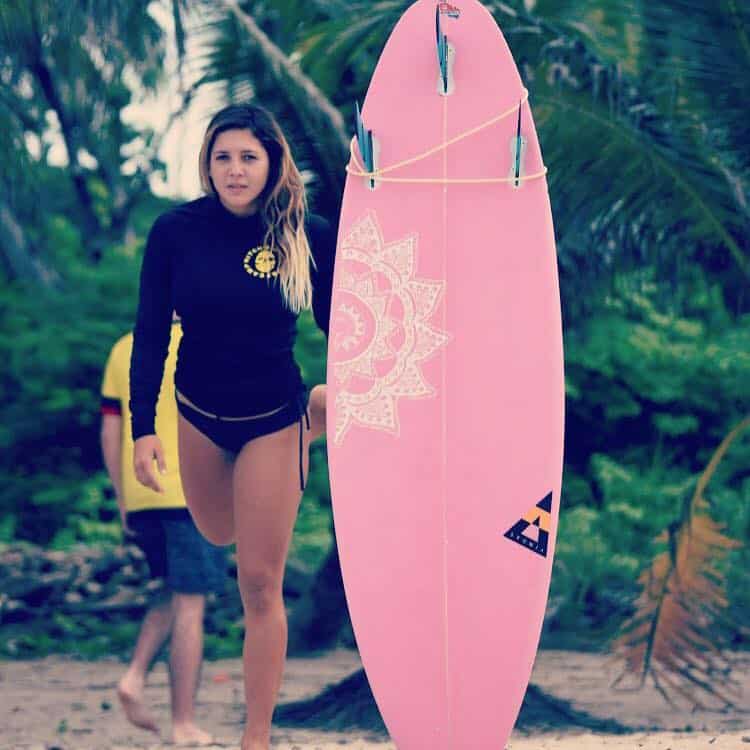By Nick Holt

Surfing is hard enough as it is, don’t let your lack of fitness get in the way of your surfing. Whether you’re a newbie just learning to pop-up or an experienced wave ripper, here are 5 exercises that will help you get stronger, improve your balance, and get more flexible.
I like to break surf training into 3 general categories:
- Strength
- Balance
- Flexibility
Strength = Power and Endurance
Surfing requires both forms of strength – power and endurance. Sprint paddling to catch a wave is an example of power as is popping up quickly on the board. Paddling for 3+ hours in the water would be the example of why you need to have good endurance for surfing. Make sure you do exercises that target both the power side of strength and the endurance part.
Below you’ll find one example of power and one for endurance.
Strength (Power)
1. Surfer Pop-up
This is the exact move you do every time you catch a wave. Think of a surfer pop-up like a push-up combined with a jump to your feet.
Lay down on your stomach with your feet together and your hands under your shoulders. Powerfully drive off the ground as if you are doing a push-up and jump to your feet in a split stance. You want to land your front foot directly under your chest and your back foot about 3 feet behind. Then return to the start position on your stomach. Shoot for 5 pop-ups with the right foot forward and then do 5 with the left foot forward.
Don’t worry if you don’t nail this on the first go. When I teach people to surf, we can spend hours just perfecting the pop-up.
Strength (Endurance)
2. Jumping Rope
Jumping rope is one of the more underrated tools for conditioning. Not only does this exercise help train your cardiovascular endurance, but it also develops good coordination between your upper and lower body, which is crucial if you want to surf well.
Balance
The foundation of good balance is a strong, stable core. While balance training tools like the Indo board or other balance boards might be useful, I always like to start by building a strong core. Here are 2 exercises for building a rock solid core.
3. Leg Lowering
While this exercise will strengthen your whole core (and especially your lower abs), it’s much more than just a core exercise. Leg lowering is also a motor control movement that teaches you how to control and stabilize your hips, which will directly lead to better stability and balance.
Start lying on your back with your legs fully extended in the air directly above your hips (bend your knees if you can’t keep your legs straight) and your hands by your sides. Keeping your back flat against the ground, lower your right leg down slowly towards the ground while your left leg stays straight up. Slowly return the right leg up to meet the left. Repeat on other side.
The key here is to keep your spine completely flat against the ground and your hips square. If you have trouble maintaining this position, bend your knees to 90 degrees throughout the exercise.
4. Stability Ball Jack Knife
The stability ball jack knife is a core and shoulder exercise combined. The goal here is to maintain a strong plank position as you lift your hips towards the sky and then lower them back into plank. All the while, your shoulders are working hard to stabilize your body as you move from plank to pike.
Start in a push-up position with your feet on the ball and hands on the ground. Maintain your body in a straight line from head-to-toe. Drive your hips up to the sky, rolling the stability ball slightly closer to your hands. Try to keep your legs straight so you create a V shape with your body. With control, return your hips back to the starting position without letting your lower back arch. Repeat for 10-15 reps.
To make this exercise easier, start with the ball underneath your shins or knees instead of your feet. If you have trouble keeping your legs straight, you can bend your knees into your chest instead.
Flexibility
Flexibility training requires patience and effort. For many of the guys that I train, flexibility limitations are huge issue for them. This deep squat is one of the best ways to improve hip flexibility.
5. Deep Squat (with rotation)
Lower down into a deep squat, ideally with your butt below your knees. Once you’re comfortable, reach one arm outside of your leg and rotate your spine to follow. Hold the rotation for 10 seconds, then return to center and repeat on the other side. Try to maintain in this deep squat position for up to 1 minute, doing a few rotations on each side.
In a deep squat, your goal is to keep your back straight. That means no arching or rounding. This is really important to keeping your spine safe and healthy. Also, make sure your knees stay inline with your hips and ankles.
If deep squatting is tough for you, you can try holding a moderate weight (dumbbell, kettlebell, or even a heavy rock) in front of your chest to help you achieve greater depth. Alternatively, hold on to a post, sturdy chair, or doorway to help you maintain a deep squat and a tall spine.
This article was originally published on Saltwaterfit.com, March 30th, 2018


